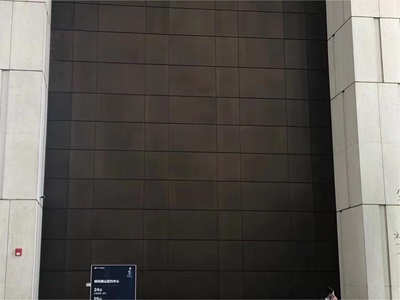Expanding upon the initial exploration of stainless steel decorative panels with antique finishes, we delve deeper into their multifaceted applications, benefits, and the evolving trends that make them a cornerstone in modern design and architecture. This extended discussion will provide a comprehensive understanding of their potential, illustrating why these materials are not just a choice but a statement in contemporary and historical-themed projects.

Historical Building Restorations
In the realm of architectural conservation, stainless steel panels with antique finishes serve as an invaluable tool. They allow restorers to maintain the historical integrity of a building while utilizing materials that offer enhanced durability and resistance to environmental factors. This blend of old-world charm with new-world resilience is particularly important in urban environments where pollution and weathering can significantly affect building materials.
Landscaping and Outdoor Spaces
Moving beyond the confines of indoor and outdoor building surfaces, stainless steel panels are increasingly used in landscaping and the creation of outdoor features. Garden sculptures, fountains, and boundary walls adorned with antique-finished panels integrate seamlessly into green spaces, offering a visually striking contrast between the natural and the man-made. This application highlights the material's versatility, proving its suitability not only in structural elements but also in enhancing outdoor aesthetics.
Customizable Options for Designers
The customizable nature of antique finishes on stainless steel panels presents endless possibilities for designers. Whether it's a brushed, matte, or mirror finish, each treatment can be tailored to fit the specific vision of a project, allowing for unique pieces that can't be replicated with off-the-shelf products. This level of customization is particularly appealing in high-end residential and commercial spaces, where bespoke design elements are a hallmark of luxury.
Environmental Sustainability
With a growing emphasis on sustainable and eco-friendly design practices, stainless steel decorative panels are also prized for their environmental benefits. Stainless steel is highly recyclable, reducing the need for new raw materials and minimizing waste. When combined with antique finishes that require minimal upkeep, these panels represent a sustainable choice that aligns with green building standards and certifications.
Integration with Smart Home Technology
As homes and buildings become increasingly integrated with smart technology, stainless steel panels with antique finishes are being designed to accommodate and enhance these systems. Panels can be engineered to house touch panels, display screens, and other interactive elements, merging the aesthetic of the past with the technology of the future. This integration is a testament to the material's adaptability and its role in forward-thinking design.
Cultural and Artistic Expressions
Beyond their structural and functional applications, stainless steel panels with antique finishes are being embraced by the art world for their potential to convey cultural and artistic narratives. Public art installations, museum exhibits, and even urban infrastructure projects are utilizing these materials to make bold statements that resonate with audiences and enrich public spaces.

The expanded exploration of stainless steel decorative panels with antique finishes underscores their significance in contemporary design and architecture. Their application transcends mere aesthetics, embodying a fusion of durability, sustainability, and versatility. As designers and architects continue to push the boundaries of what is possible, these panels stand out as a material that not only meets the demands of modern construction but also enriches our visual and environmental landscape. Whether revitalizing historical edifices, crafting bespoke furniture, or integrating with cutting-edge technology, stainless steel panels with antique finishes offer a timeless solution that bridges the gap between the past and the future, the natural and the fabricated, the functional and the artistic.
By continuing to use the site you agree to our privacy policy Terms and Conditions.